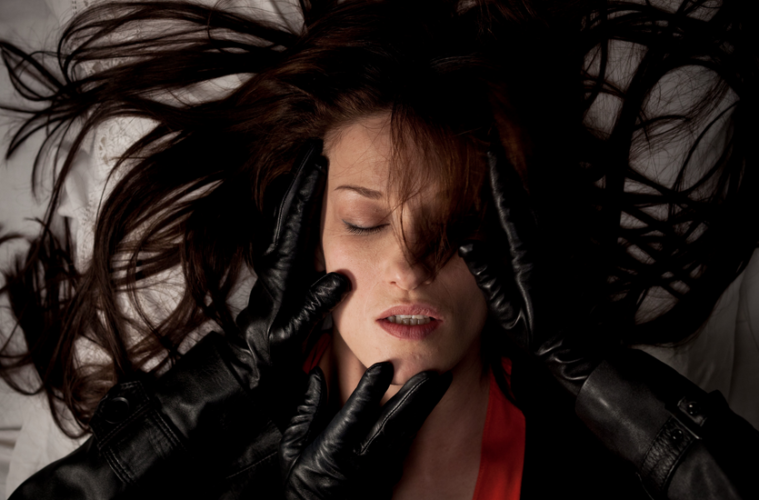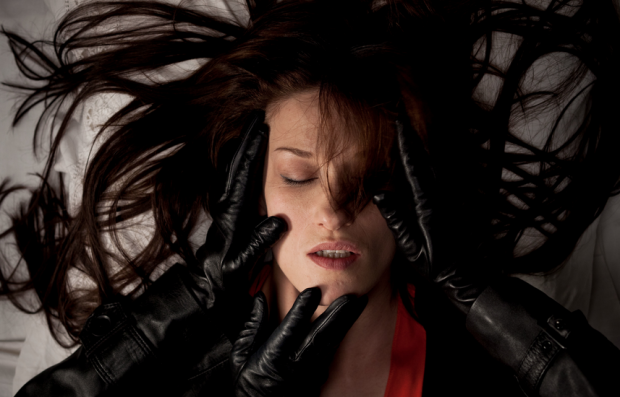
2014 was a good year for films. I began this feature exactly the same way I did last year. What does that even mean? I suppose it means that there were lots of movies that I liked, and that there are many that I missed but would like to catch up on. (This year, a preliminary count for the latter is around 30.) I haven’t been at this for long, though, and, as we all know, something that seems great now may fade in years (rightly or wrongly), and something I overlook now could creep up in my consciousness over the next year or two — or five, or ten. And maybe thinking every year is good means they’re all average.
But who cares about how “good” of a year it is. I don’t know what that means. Here is what I know: I saw a number of films of varying quality comment with varying nuance on the artistic quality of now vs. then (though most obvious in Birdman and Only Lovers Left Alive, I would argue it’s also a part of The Immigrant and Inherent Vice); a pair of films made by very unalike people in radically different circumstances trying to push cinema forward (Goodbye to Language and Closed Curtain); and I enjoyed entirely unalike tearjerkers alongside films one could dismiss as mere aesthetic “exercises.” I think the variety of these kinds of films, in genre, origin, and style, points to a healthy cinema, even as, for example, America’s white-male monopoly is not being successfully combated. (Full disclosure: my list does not do as much as I would like as far as combating male dominance goes, domestic or abroad.)
Before we move on to a list of my favorites, I would like to clarify two things. First is the arbitrariness of the order, as if films that occasionally differ wildly in just about everything can be objectively evaluated. It should go without saying that I fell back on personal preference: what hit me the hardest while watching, what stuck with me, what do I find myself most eager to rewatch? Second, honorable mentions are for films of particular note that, for one reason or another, are not necessarily among films 10-1.
Honorable Mentions
With that said, honorable mentions begin with Birdman, which would in fact be #11. It’s as self-congratulatory as the haters say, but its repeated toggling between subjective and objective points of view, sometimes with a pan or less to demarcate the two, points us toward an underutilized frontier for “digital cinema” in a way that, to me, is far more interesting than anything David Fincher or Michael Mann has done. A Girl Walks Home Alone At Night has an unfulfilling script, but it’s a digitally shot black-and-white film that looks great, which I don’t think I had seen before. In Bloom is a solid film with one scene so good that I can’t help but highlight it somewhere. Alain Resnais, in my mind the director of cinema’s greatest achievement (Last Year at Marienbad), if not the cinema’s greatest director, went out on a fine note with Life of Riley, which seems to only grow in memory. James Ward Byrkit’s Coherence would require a rewatch in which I pay attention to detail instead of plot to decide how well-directed (as opposed to well-scripted) it is, but it was probably the most fun I had in a theater all year. There are more, but alas, I have gone too long already.

10. The Missing Picture (Rithy Panh)

The story of Panh and his family’s time under the Khmer Rouge is one worth listening to all on its own, and Panh tells it with a mix of regime-sanctioned footage and his own clay-figure dramatizations, the latter of which paradoxically makes the story more emotional even as it becomes more abstract. But Panh’s storytelling method also turns The Missing Picture into a statement about documentary and fiction themselves, with the title referring to the footage showing the real Khmer Rouge: genocidal executioners and the abusive slave-owners. No such footage exists, of course, and so the story told by film, allegedly indexical and documentarian by nature, is less true than the obvious re-creations that Panh must create from scratch rather than from events in front of him. A poetic, thoughtful voiceover, complete with references to Jean-Luc Godard, makes the film both lyrical and intellectual, but it also serves to describe conditions that cannot be shown. Panh is harvesting all the tools he has available to try to construct the missing picture, and his success is astonishing.
9. The Strange Color of Your Body’s Tears (Hélène Cattet and Bruno Forzani)
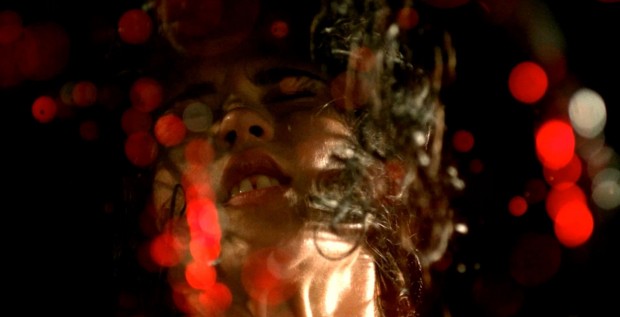
Don’t let the people calling The Strange Color of Your Body’s Tears a Giallo homage scare you; you don’t need to know anything about Italian horror to appreciate what Hélène Cattet and Bruno Forzani are doing. Sure, the close-ups of gloves and knives are familiar to fans of the genre, and most, if not all, of the great music has been used in other movies, but the montage-heavy style, subjective camera work, and sound that seems to be turned on and off by particular images and movements is not quite like anything we are accustomed to, and is central to the film’s best sequences. Admittedly, the second half in particular begins to focus on a narrative that is not especially interesting, being downright plausible compared to the plots in the films of Argento and Bava (to name Italy’s best-known practitioners of horror), but the nonstop boldness and aesthetic proclivities more than make up for these shortcomings.
8. Gone Girl (David Fincher)

By far Hollywood’s greatest film of the year, Gone Girl should reassure The Girl With The Dragon Tattoo haters that Fincher is still in top form, something he reached with Zodiac and has arguably not fallen from since. Part of that is certainly finding better scripts and tightening his group of collaborators, with editor Kirk Baxter climbing aboard after Zodiac while DP Jeff Cronenworth (of Fight Club) and composers Trent Reznor & Atticus Ross make their third consecutive credits, but Fincher himself is, perhaps for the first time, able to recognize the absurdity of his high-concept films and play them for pitch-black comedy. For all its twists and turns and ostensible crime-thriller appearances, Gone Girl is Fincher’s funniest work, in no small part because it strong performances across the board, and it also makes for a deft commentary — not just of marriage or the media, but of our relationship to images in general.
7. Stray Dogs (Tsai Ming-Liang)
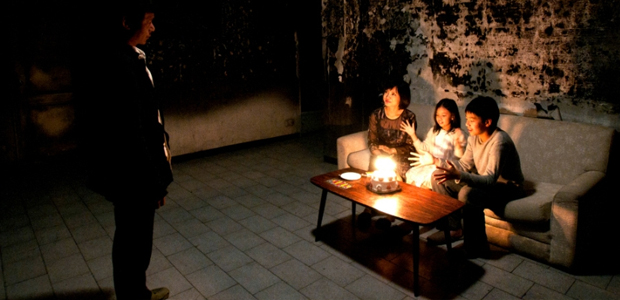
In Stray Dogs, three actresses play the same character, with the first of them departing after the film’s first shot and the third taking over after the film’s central ellipse. The Buñuelian tactic gives the film a narrative ambiguity that could easily feel cheap and pointless, but Tsai makes it work. Perhaps it’s because Stray Dogs qualifies unambiguously as “Slow Cinema,” with shots of eating or looking at murals taking up several minutes, making it easy for the impatient and skeptical to say that “nothing happens.” But Tsai’s style forces us to question conventions, and among those conventions is the way in which we make sense of narrative. The ambiguity is therefore not just earned, but crucial. Tsai is equally subtle and clever in a series of four non-consecutive shots in which the protagonist (Lee Kang-sheng) serves as a human billboard, where the personal and political are gradually privileged, his aesthetic decisions being central to everything the film has to say. Never is this more clear or well-done than in the stunning penultimate shot, the film’s longest, in which humans — or at least the better of us — are implicitly differentiated from stray dogs because of our ability to find solace and make sense of art. Or, at least, that’s one interpretation of it. Thanks to that narrative ambiguity, Stray Dogs is not just perfectly executed — it’s also a gift that keeps on giving.
6. Manakamana (Stephanie Spray and Pacho Velez)
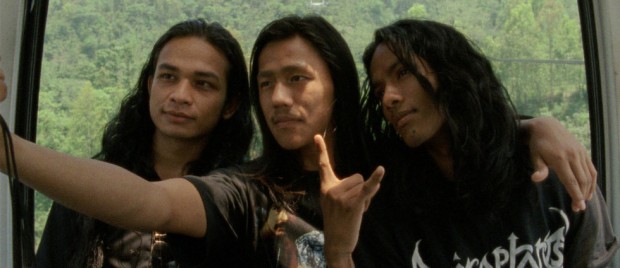
If Structural Film of the American avant-garde foregrounded the viewing process by minimizing narrative and film’s illusory, mystical qualities, Manakamana is a neo-Structural Film par excellence. Each shot is an unmoving look across a cable car leading to Manakamana Temple (Goddess Manakamana is said to grant the wishes of all those who pilgrimage to her, although, thanks to the cable car, what used to be a three-day trip is now a mere 11 minutes), lasting as long as a reel of 16mm film. The trips we witness are sometimes amusing, sometimes polite, sometimes awkward, but Manakamana lives in the details: in which direction is the camera looking this time, which way is the car moving, what else is different? By letting a number of rides play out in something close to silence, it turns our focus on ourselves, our own attention spans, and our own search for “clues” as to what, exactly, we should be looking for. We should, of course, be focused in part on our own viewing habits, but another great thing about Manakamana is that everyone seems to find something a little bit different in it.
5. Goodbye to Language (Jean-Luc Godard)
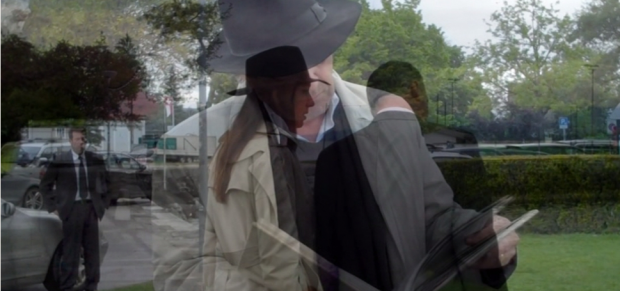
Spoiler alert: This entire paragraph will talk about a technique / shot(s) in Goodbye to Language that is / are best experienced unspoiled. If there is so much as a prayer of this movie coming to a theater near you in glorious 3D, you might want to skip ahead. Those who have seen the film know what I am talking about: the moment in which the two cameras, standard for shooting in 3D, stop recording the same thing. One camera follows two characters over to the water while the other camera stays with a different player, causing the image to turn into something that can be described as a “superimposition,” although it is not quite a superimposition as one normally thinks of it in filmic terms. However you describe this, it’s one image for the left eye and the other for the right eye. This is a use of 3D that, if not entirely new, is probably unlike anything anyone alive has seen on the big screen, and all the more so because the images actually come back together. It encourages us to create our own shot-reverse-shot editing — an inclination that’s only stronger when Godard does the trick once more as a couple argues and we find ourselves literally taking sides — and makes the age-old question of what we are doing while watching a film a question of literal, physical action rather than mental thought. These shots alone would put Goodbye to Language on this list, but the film offers other pleasures (as well as some annoyances) as well.
4. Two Days, One Night(Jean-Pierre and Luc Dardenne)
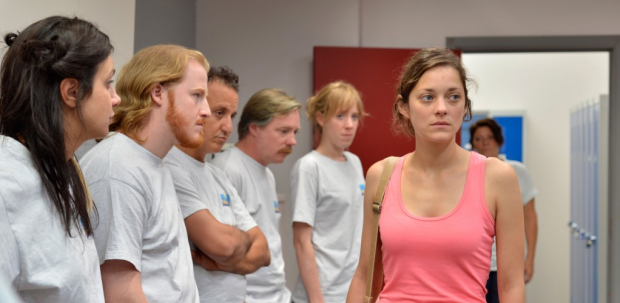
The Dardenne brothers’ greatest work (to these eyes, still blind in a couple spots) is also their simplest. Sandra (Marion Cotillard) must convince her 16 co-workers to vote to keep her employed rather than to have her laid off so they can enjoy a bonus. Outlandish? Perhaps, but this is the film’s premise, a vehicle to explore the way we react to and treat one another in difficult situations, and the conclusions and discoveries the film makes through this premise are not just sound, but also revealing, deeply heartfelt, and even surprising. When Sandra is talking to her coworkers, the Dardennes are careful to never give her plight more weight than theirs. They also capture depression and one or two of life’s small joys better than most directors could ever dream of doing. And yet this wasn’t even Cotillard’s most emotional journey of the year.
3. Only Lovers Left Alive(Jim Jarmusch)
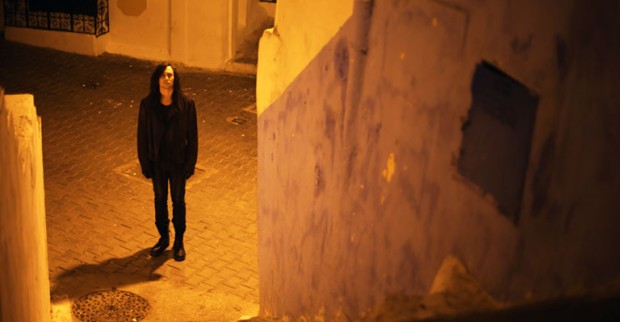
Jim Jarmusch, who once cast Tom Waits and Joe Strummer in his films, seemed to have gone in a different direction lately — Jack White could have only a small role in Coffee & Cigarettes, and Broken Flowers and Limits of Control certainly aren’t remembered for their relationship to music. But Only Lovers Left Alive sees the unofficial Curator of Cool reviving while also mocking his old tendency. He sets his vampire vs. “zombie” (not real zombies, mind you; just regular people who aren’t as good as Shakespeare and Eddie Cochran) tale in the fallen mecca of Detroit, simultaneously emphasizes and pokes fun at the jadedness of his leads by naming them Adam and Eve, and immediately turns the pessimist of the two (Tom Hiddleston) into a caricature by turning his first “I was there” into a YouTube joke where the joke isn’t on YouTube so much as himself. This is simultaneously the coolest film Jarmusch has ever made and also his most intelligent look at what it means to be “cool.” Good thing (but also no wonder) he found the perfect ending for it.
2. The Immigrant (James Gray)
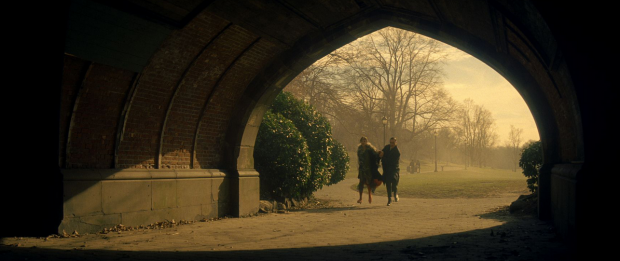
This is the one, the other Marion Cotillard-led film that will make you cry. James Gray deconstructs America’s foundational myth by linking it to cinema, setting his film in the era of popular melodrama (both on stage and on screen) and beginning with a shot of Lady Liberty’s back turned on her admirers. What proceeds from there is nothing short of stunning, anchored by two brilliant performances (Cotillard as Ewa, the immigrant forced into prostitution, and Joaquin Phoenix as Bruno, the one who forces her) and realized by a director who has now earned the same superlative. The arbitrary social forces that victimize heroines in melodrama are here seen as deeply systemic and rooted in the offending society, and Gray can only tease this and other tropes briefly before deconstructing and perverting them. The only generic truth that he finds truth in is the face, à la Griffith before him. Never is this clearer than in one of the year’s best scenes, when Ewa goes to confess. Gray is not content merely to undercut the “American Dream”; he’s taking the entire cinematic representation of it with him.
1. Closed Curtain (Jafar Panahi and Kambuzia Partovi)
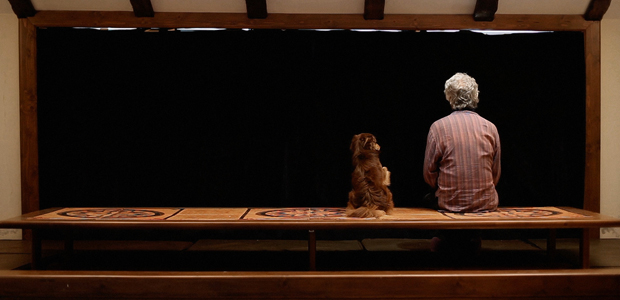
Suspecting but also unsure that this film would go undistributed, I ranked it 2nd last year after watching a heavily watermarked screener. Perhaps I did not want to give 2013’s crown to a film without a 2013 release; perhaps it was propaganda vote of sorts, something designed to put the film into people’s minds; perhaps I believed at the time that the (still-great) Upstream Color was a better film. But now both 2013 and 2014 have come and gone, Closed Curtain has been distributed and played a whopping four theaters, three of them for just one week, and been seen by thousands of people.
You may detect some bitterness in my tone. It is the belief of this humble writer, after three viewings, that Closed Curtain is not merely the year’s best film, but also a contender for the single best of the decade so far. Perhaps it shouldn’t be such a shock that Panahi and Partovi were able to make such a remarkable work under such harsh restrictions (Panahi is currently banned from filmmaking), as Iranian artists have always found ways to innovate cinematic language in order to combat censorship, but the way Panahi and Partovi innovate here is downright revelatory.
Closed Curtain is a consistently surprising and always-enjoyable film that can offer up mystery, tenderness, and intellectual provocation all at once, or at least smoothly transition among them. It is a genuinely surreal film (admittedly a critical bias) in which the dream and the imagination is equated with cinema, and it invokes digital technology to complicate the relationship between the image and the real / imaginary, seeking not just to adhere to but also converse with and update André Breton’s Surrealist Manifesto. It is a desperate, political film, a cry for help that rarely ever needs to directly address Panahi’s predicament. It is, in other words, everything cinema should be, as well as a statement about everything cinema can be.
Closed Curtain is available for digital pre-order here.

